One of the rewards of my re-studying of the books by Tomie dePaola is that I am realizing how very much he used simplified designs and repeated patterns in his later books. I have also noticed how he repeately uses several motifs–like the white birds and the hearts. In her book Tomie dePaola: His Art His Stories, Barbara Elleman offers the reader valuable insight into dePaola’s use of visual motifs and imagery.
Image Credit: Tomie dePaola on Amazon
She quotes dePaola: “I include them when the story calls for a highly stylized technique, such as in Francis, the Poor Man of Assissi… or when there is room for graphic elaboration, such as in The Story of the Three Wise Kings. … [The bunies] ‘They just show up.” Elleman, pgs. 135-136.
 Image Credit: Tomie dePaola on Amazon
Image Credit: Tomie dePaola on Amazon
Image from Tomie dePaola’s Book of Christmas Carols
 Image Credit: Tomie dePaola on Amazon
Image Credit: Tomie dePaola on Amazon
Image from Three Wise Kings”
“White birds have, undoubtedy, become the motif most associated with dePaola, and he uses them liberally. Although the white bird didn’t appear in its current form until the 1970s, birds as decorative objets–along with suns an stars–can be found in books as far back as Sound. … And Whitebird has become…the name of dePaola’s business enterprise.” Elleman, pg. 136.
 Image Credit: Tomie dePaola on Amazon
Image Credit: Tomie dePaola on Amazon
Image from Tomie dePaola’s Book of Christmas Carols
“The stars, suns, and moons, particularly those in his Christmas stories, have a religioius connotation…
 Image Credit: Tomie dePaola on Amazon
Image Credit: Tomie dePaola on Amazon
Image from Old Befana
“‘The six-pointed stars, for example, in Ol Befana and in The Story of Three Wise Kings, symbolize the star of creation….
 Image Credit: Tomie dePaola on Amazon
Image Credit: Tomie dePaola on Amazon
Image from Three Wise Kings
“…the five-pointed stars the Incarnation….” Elleman, pg. 137.
 Image Credit: Tomie dePaola on Amazon
Image Credit: Tomie dePaola on Amazon
Image from Three Wise Kings
“Beginning with his 1982 books, a small heart almost always appears on his cover art.” Elleman, pg.137.
Tomie dePaola & the Theater
Initially, Tomie dePaolo pursued a career in the theater. Since his youth, he had performed in plays and other theatrical events, and he had painted sets for his productions. He told his biographer Barbara Elleman that illustrators need to have a backgound in theater.” A picture book illustrator must cast the play, costume the characters, plan their entrances and exits, design the setting, and move the action forward–all while not losing sight of the overall plot.” Elleman, pg. 139.
DePaola and Costuming & Set Design
As dePaola became more and more comfortable with illustrating, his background in theatrical costuming becomes increasingly apparent.
Check out the costumes in the following of dePaola’s productions: 
Although the costumes of the kings are more elaborate and exude more wealth, the costume of Old Befana is done equally well. Each type of character wears clothes suitable to their stations in life.
 Image Credit: Tomie dePaola on Amazon
Image Credit: Tomie dePaola on Amazon
Image from Three Wise Kings
In The Three Wise Kings, the costuming is outstanding again, and the set design is also excellent.

DePaola’s illustrations reflect that he has done a great deal of research, but they also reflect that he had an eye for detail.
DePaola’s Illustrating Style Evolved

Image Credit: Tomie dePaola on Amazon
Image from Fight the Night -1968
The art in dePaola’s book Fight the Night is a groups of simple pen and ink drawings.
Compare the above Illustration to dePaola’s art in 2009 –almost 40 years after Fight the Night.
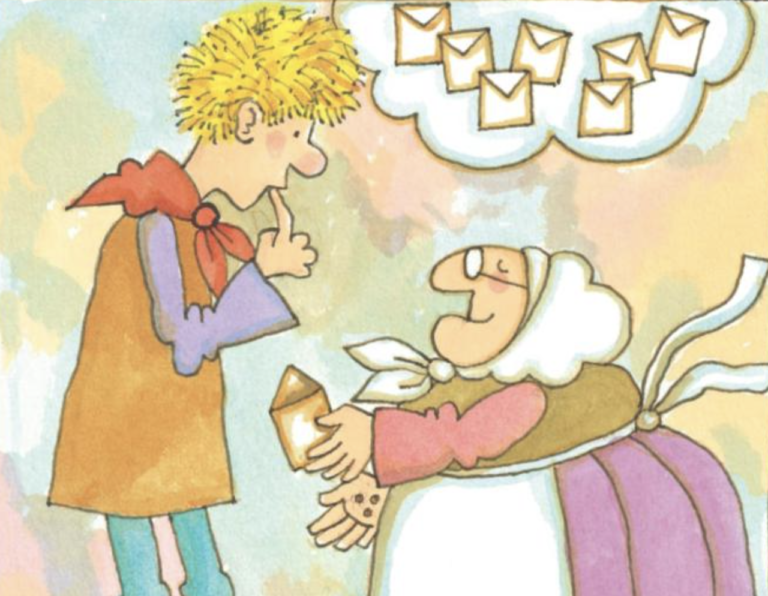 Strega Nona in 2009
Strega Nona in 2009
Image Credit: Tomie dePaola on Amazon
Illustration from Strega Nona’s Harves

Strega Nona in 1975
Image Credit: Tomie dePaola on Amazon
Illustration from Strega Nona
And the Strega Nona in 2009 had changed since the first Strega Nona in in 1975.
DePaola changed his color schemes several times during his career, but his work became more design-oriented than that of simple drawings and paintings

The Clown of God – 1978
Image Credit: Tomie dePaola on Amazon
Image from The Clown of God
The illustrations for The Clown of GYod reflect that he is moving toward a sense of design. You get a taste of that in his checked floor, an element that he repeats in several of his later books.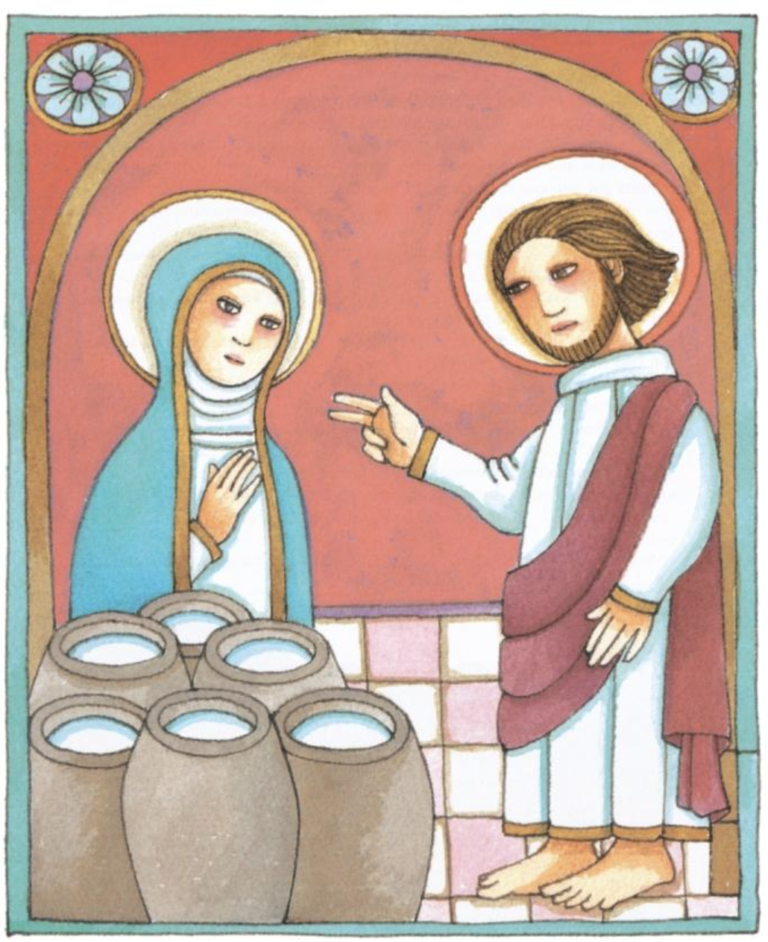
MIracles of Jesus -1987
Image Credit: Amazon
Notice the tile checked floor and the checks in the cover design.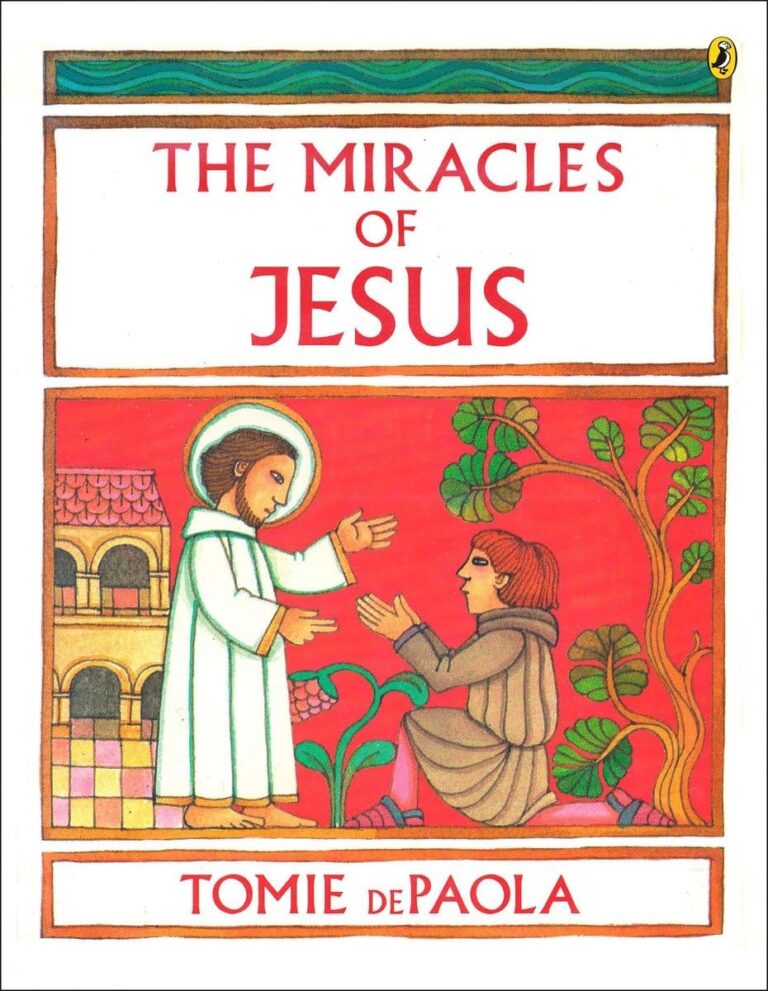
Image Credit: 1987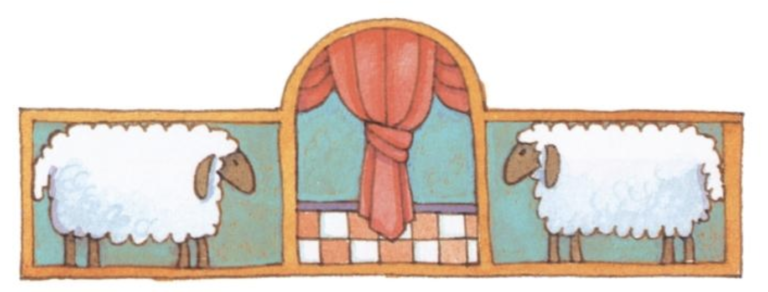
Miracles of Jesus – 1987 – Amazon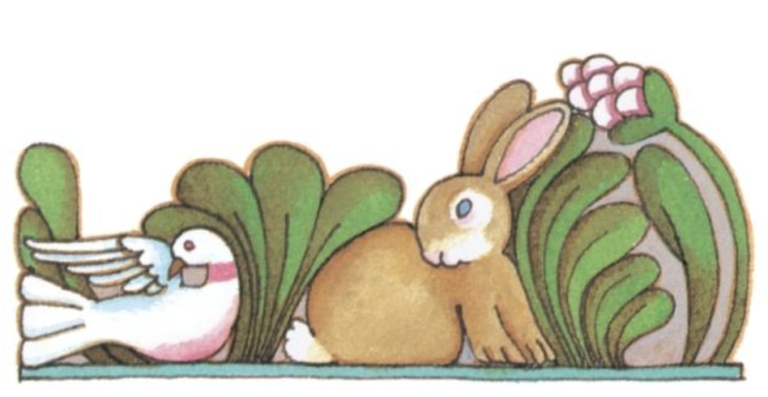
Miracles of Jesus – 1987 – Amazon
Also notice how the rabbit and bird illustration is a design–and not a painting.
By 1987, DePaola has also begun using repeated design.
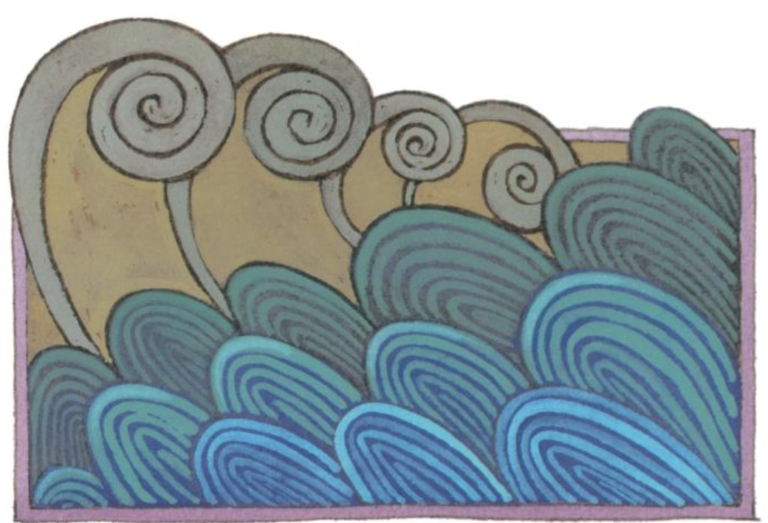
Credit: Tomie dePaola on Amazon
Image from The Miracles of Jesus
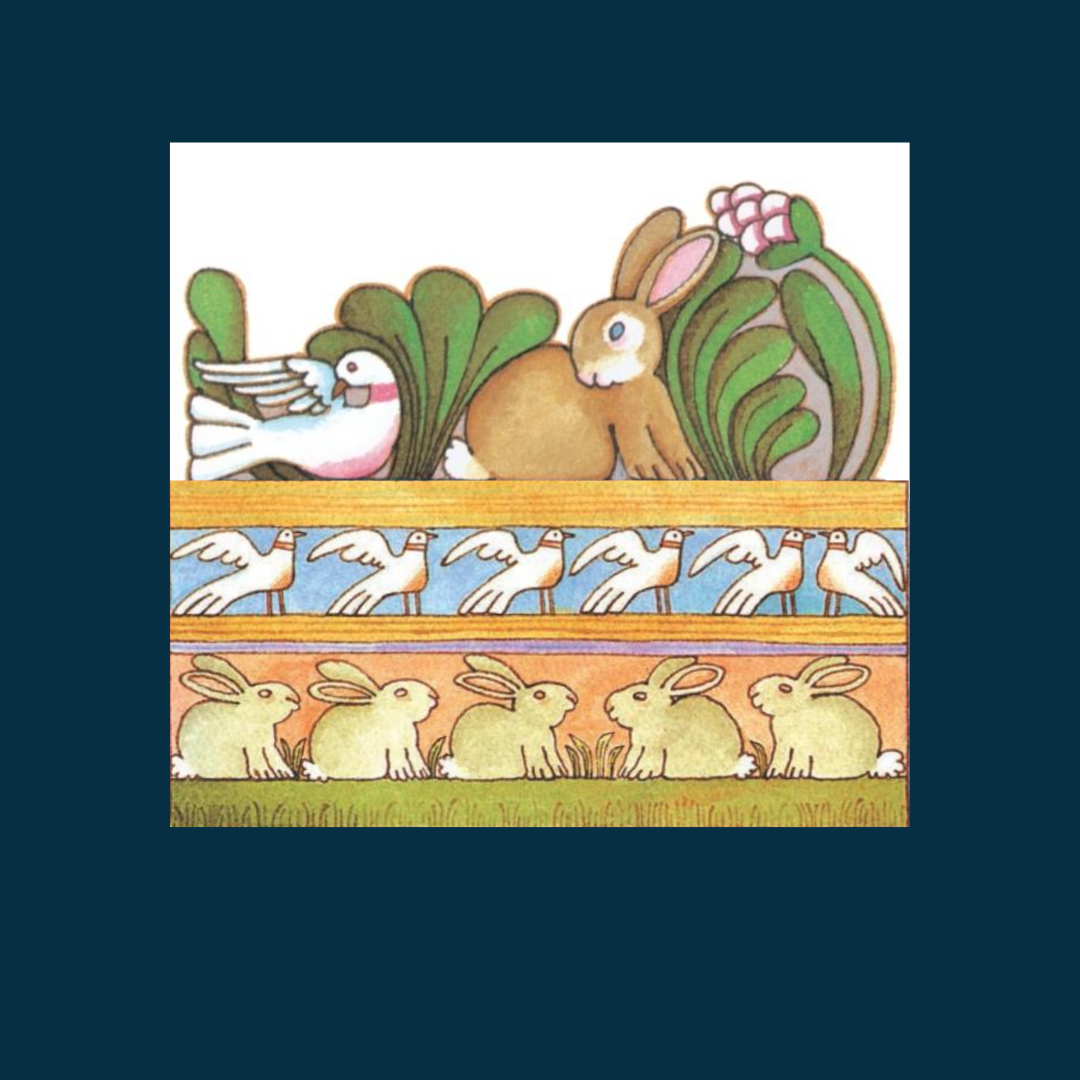

Tomie dePaola’s Book of Bible Stories – 1990 Edition
Image Credit: Tomie dePaola on Amazon
By 1990, dePaola had learned how to merge stylized design and natural paintings. In the above illustration, the checked border and the plants are stylized designs. In the image below, Adam and Eve are more naturalized, and they are surrounded by stylized design. 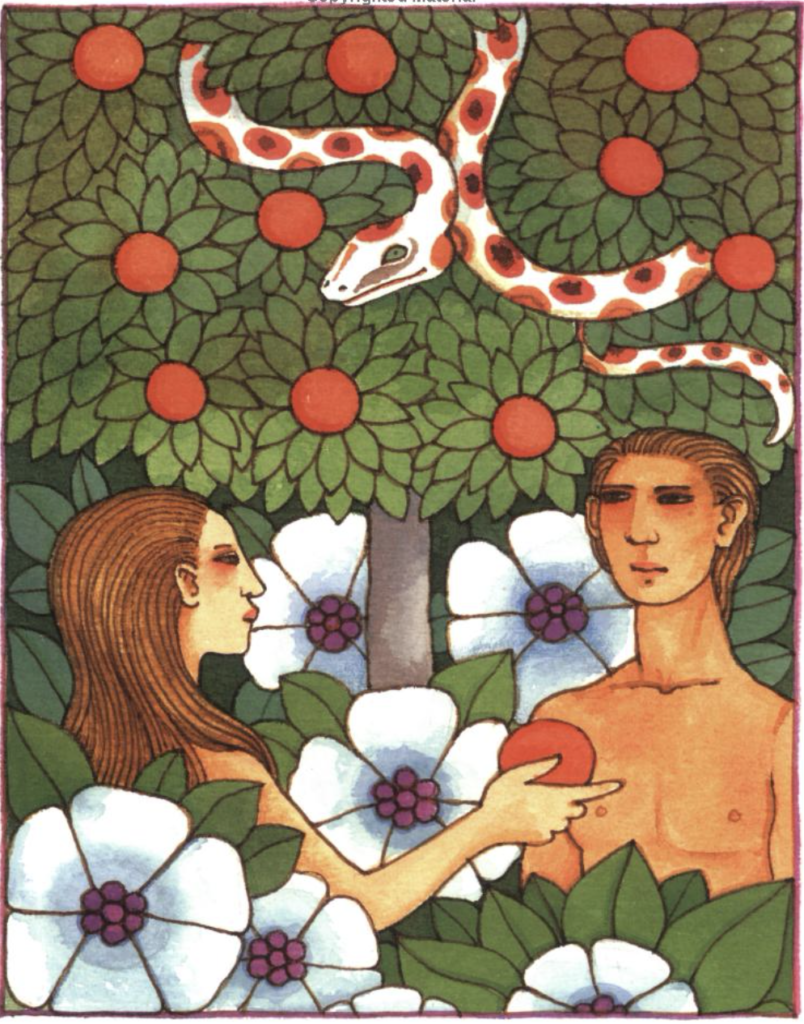 Tomie dePaola’s Book of Bible Stories – 1990 Edition
Tomie dePaola’s Book of Bible Stories – 1990 Edition
Image Credit: Tomie dePaola on Amazon
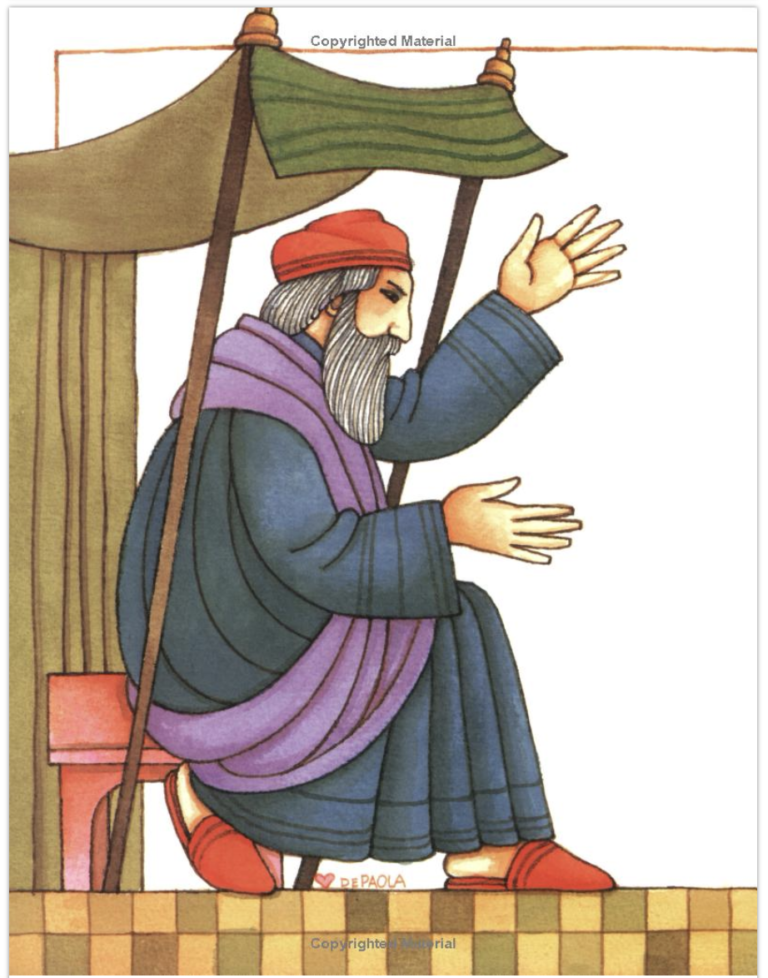 Tomie dePaola’s Book of Bible Stories – 1990 Edition
Tomie dePaola’s Book of Bible Stories – 1990 Edition
Image Credit: Tomie dePaola on Amazon 
Image Credit: Amazona
The folds in his clothes become more and more stylized. You also see that same type of clothing design in Three Wise Kings and Old Befana.
Image Credit: Amazon
Again: Compare Old Befana’s Costume to that of Strega Nona.

Image Credit: Amazon
In 1976, Strega Nona’s dress has few of the lined segments. The folds of her clothing are painted more naturalistically, but notice how the tiles on the roof of the house are created as a repeated design. The tree in the above illustration is a stylized design.

In 1980, Old Befana’s dress is broken into stylized segments, and the ground is created as stylized and repeating waving bands. Notice the stylized ways in which he has suggested the oak tree. But also notice that throughout his years [after he moved beyond the line drawings of the 1960s]. there is a recognizable dePaola quality about all of his books.
.
I
Discover more from Jacki Kellum
Subscribe to get the latest posts sent to your email.